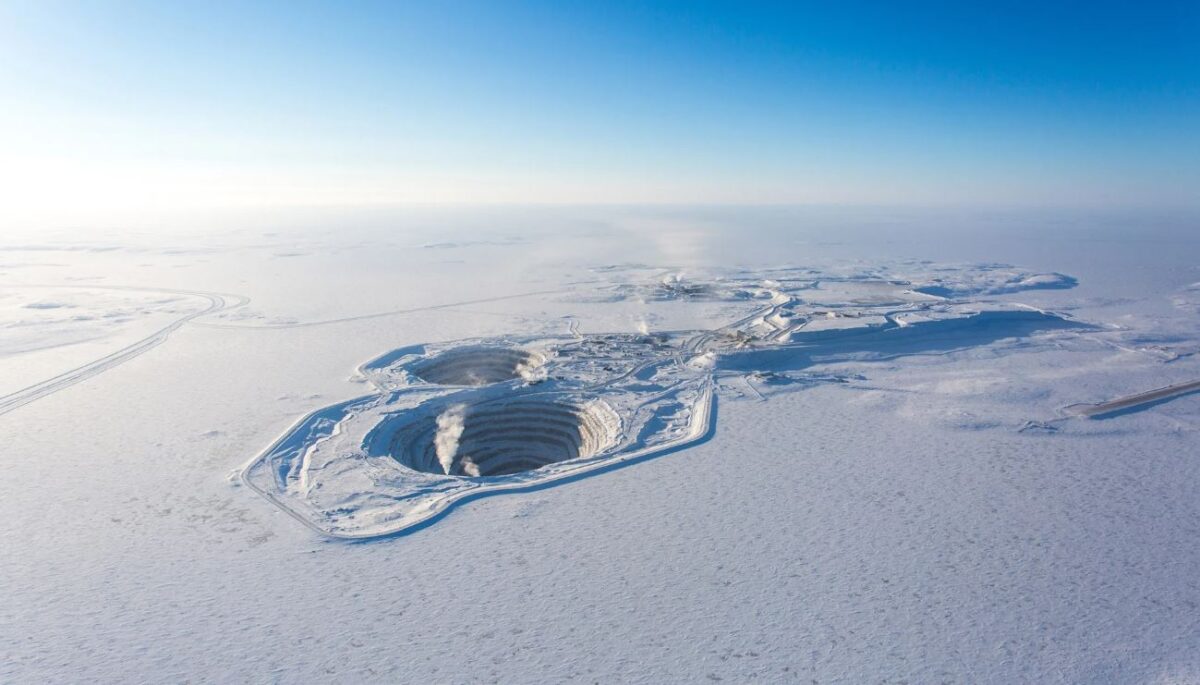Rio Tinto has completed a 3.5 MW solar power plant in Canada’s Northwest Territories, which the multinational mining corporation claims is the largest off-grid solar installation in the country’s territories.
Located at Rio Tinto’s Diavik Diamond Mine, around 220 km south of the Arctic Circle, the site is equipped with 6,620 modules, which Rio Tinto expects to generate 4.2 GWh per year. Rio Tinto opted to install bi-facial modules in a bid to take advantage of albedo from the snow that covers Diavik for most of the year.
It’s expected the solar power plant will provide up to 25% of the Diavik mine’s electricity needs during closure work. Commercial production at the mine is scheduled to end in 2026 with closure work expected to run until 2029.
The installation was also backed by government support. Funding of CAD 3.3 million ($2.4 million) was secured from the Government of the Northwestern Territories through its Large Emitters GHG Reducing Investment Grant Program. Rio Tinto’s plant at Diavik is the first project in the Northwestern Territories to benefit from funding from the grant scheme, which sets aside a portion of carbon tax paid by large operations such as Diavik to support projects that commit to cut greenhouse gas emissions in the territory.
The diamond mine solar plant joins an existing 9.2 MW wind power plant that has been operating at Diavik since 2012, which Rio Tinto claims is the largest wind installation in Canada’s north.
Rio Tinto’s progress at Diavik coincided with the company announcing plans to install two 5.25 MW solar farms at a mine in Australia. Both plants will be installed at Rio Tinto’s Northern Territory Grove Peninsula bauxite mine, which is scheduled to close by the end of the decade.
UK-based renewables company Aggreko will construct, own and operate both solar farms at the Rio Tinto Gove site for up to 10 years. Construction work is slated to begin at the end of July 2024 with a targeted completion date in 2025. The solar plants will be built on Australian First Nations Gumatj and Rirratjingu Country on Rio Tinto leases.
Rio Tinto Gove Operations Acting General Manager, Shannon Price, said the solar project is part of a “shared vision” the land's First Nations owners to leave a “positive legacy” when the bauxite mine ceases operations.
“We’re excited to work with the Gumatj and Rirratjingu clans to provide an opportunity to secure alternative electricity generation assets on their country and to discuss opportunities to commercialize energy infrastructure in the future,” Price said.
This content is protected by copyright and may not be reused. If you want to cooperate with us and would like to reuse some of our content, please contact: editors@pv-magazine.com.



1 comment
By submitting this form you agree to pv magazine using your data for the purposes of publishing your comment.
Your personal data will only be disclosed or otherwise transmitted to third parties for the purposes of spam filtering or if this is necessary for technical maintenance of the website. Any other transfer to third parties will not take place unless this is justified on the basis of applicable data protection regulations or if pv magazine is legally obliged to do so.
You may revoke this consent at any time with effect for the future, in which case your personal data will be deleted immediately. Otherwise, your data will be deleted if pv magazine has processed your request or the purpose of data storage is fulfilled.
Further information on data privacy can be found in our Data Protection Policy.